To all #Hivers and @StemSocial community, my warm greetings to you all. Today I will discuss about a novel technology “Hydroxyapatite phosphorus nanoparticles” as an alternative to conventional phosphorus fertilizer to boost soil nutrient capacity and enhancing sustainable crop/food production. This is because in the currently-available phosphorus fertilizer technology and food production methods, only 10–20% of the phosphorus applied to soils is actually absorbed by plants and the remaining 80–90% rapidly reformed into forms that are of low availability. This has results into nutrient deficit for plant growth and subsequent reduction in food production.
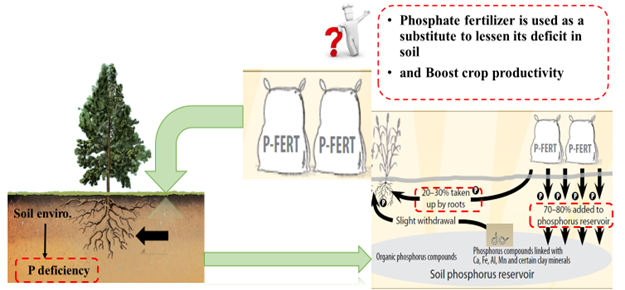
Fig 1. Phosphorus addition and immobilization in soil system.
# Introduction
Global crop/food production is undergoing extensive losses owing to climate change-related incidences including water deficit (drought). Apart from these, the availability of natural resource such as production land is limited, while global population that needed agricultural product for food is increasing. As such, innovative research and discoveries are increasing with the aim to reduce the inputs required to grow crops, develop plants that can withstand hostile impact of climate change and enhance sustainable food production. Thus, emerging evidence on the roles of nutrients such as phosphorus (P) for improving water deficit tolerance of plants provides superior insight into an efficient, economical and quicker way of improving water extracting capacity of plant from the soil and increasing plant productivity under climate change conditions.
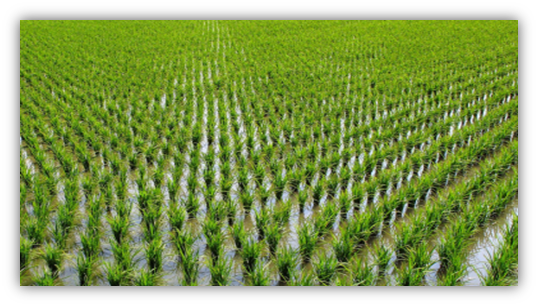
Fig 2. Global food production under changing environment
## Drought (An extreme water deficit)
Generally, findings have shown that under climate change scenarios there will more and recurrent shortage of water (Drought) for animal and plant use. As this shortage of water continues, plants development will decline and food production will be reduced. But as reported in literatures, the use of P fertilizer could mitigate drought effects by increasing stress-tolerating ability of plants, through adjustments of physiological, morphological, biochemical processes and subsequently increase plant growth and productivity.
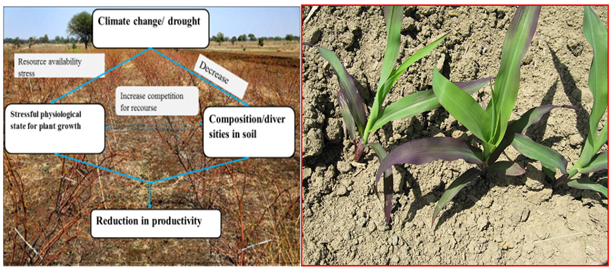
Fig 3, Soil water deficit and reduction in plant productivities
### Phosphorus: it’s deficiency in soil and impact on sustainable crop productivity
Phosphorus (P) is a key nutrient and essential structural element needed for normal plant development. But, approximately 5.7 billion hectares of the world's arable soils including the fertile one’s suffered from P deficiency. This is because the rate of P absorption by the plant roots exceeds the rate at which it is replenished in soil solution. Besides, the recurrent drought events to soil environment under climate change could aggravate P deficiency. This is just as P deficiency will exacerbate drought stress effect on plants.
Because P drives plant growth and development, its deficit in soil could results into poor plant metabolic activities and growth, reduction in dry matter per unit of P absorbed, and importantly reduction in crop yield/food production.
So,
To increase availability P in soil for optimal plant growth and mitigating impact of drought stress, several additions of P fertilizers over time may be required. **But **according to previous results, several addition of P fertilizers will (1) aggravate P scarcity, (2) increases accumulation of phosphate salt in the soil, (3) exacerbates adverse environmental condition through eutrophication and (4) could result into phosphate toxicity for plants. Hence, the need for advance technology (nanotechnology) that will increase the efficiency of P uptake, decrease adverse environmental impacts, meet the nutritional requirements of the plant and address sustainability challenges while enhancing crop productivity/food production.
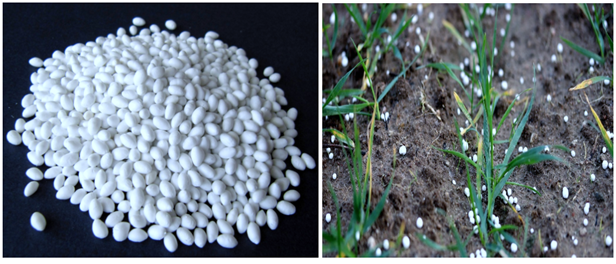
Fig 4. Phosphorus addition for enhance plant growth and mitigating drought effects.
Nano-based fertilizer: Trojan for optimal plant growth and enhanced crop/food productivity
The terms “Nano” was coined from Greek words Nanos that implies “dwarf’ and can be describe as 10-9 of any values. The use of nanotechnology (nano-base fertilizer) harbor enormous capacity for future food production. This is because nanotechnology offers invaluable means through which nutrient can be deliver to plants as at when needed by small interfering RNAs (siRNAs) into the plant cell without the involvement a biological carrier or genetic modification. However, the use of nanotechnology in boosting crop production and enhancing food sustainability in relatively unexplored.
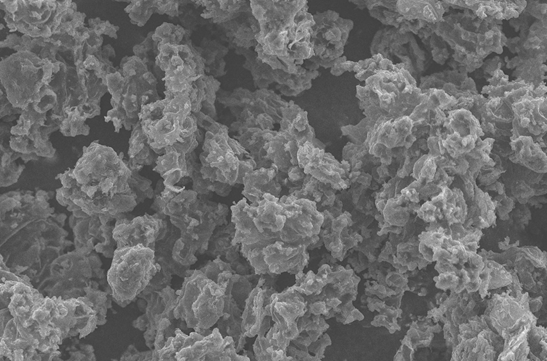
Fig 5. Nano-particles
##### Types of nano materials
There are numerous reported forms of nanomaterial that can be used to boost crop and food productivities. The three major one’s are
1.Inorganic nanomaterial: This includes metal and metal oxide NPs such as Ag, gold and TiO2
2.Organic nanomaterial: This are mostly particulate matters inspired by nature. This include Volcanic ash (which composed of silicate and iron compound)
3.Combined nanoparticles/synthetic
###### Importance of nanomaterial for crop/food production.
As reported in literature, nanomaterial could deliver diverse important benefit for crop/food production.
1.Enhanced delivery of fertilizers, curtailed nutrient loss and increased uptake of elements by plant cells.
2.Intensify the effectiveness of nutrient uses via extensive surface areas
3.Support cultivation in poor land and improve agricultural productivity due to persistent release of nutrient
4.Improve plants growth and yield by increasing seed germination, growth, photosynthetic activity, nitrogen metabolism and protein synthesis.
Common Examples of Nano-based fertilizer
1). Nano-phosphorous (P), 2). Nano-Zinc (Zn), 3). Nano-Iron (Fe), 4). Nano-Magnesium (Mg), 5). Nano-SiO2
Hydroxyapatite nanoparticles: An alternative to conventional phosphorus fertilizer
Recently, Hydroxyapatite nanoparticles (HA-NPs) as one of the nano-base fertilizer has been recommended as a novel P fertilizer that could possibly lessen adverse environmental effects associated with conventional P, by providing increased efficiency, reduced the amount of fertilizer applied and increase crop/food productivities.
Unlike the conventional P fertilizers, HA-NPs can easily reach the root zone by conventional methods such as spraying or irrigation, enhance P use efficiency and improve plant development. Because HA-NPs are usually small size, with high surface area, high retention time, and stability in diverse conditions, they are more available for plant when needed. Studies have shown that application of HA-NPs increased crop below-ground biomass by 41.2% while above-ground biomass was increased by 18% compared to a conventional P fertilizer (triple-superphosphate). Thus, could be more efficient in enhancing drought tolerating ability of plant.

Fig 6. Foliar and root entry of Hydroxyapatite P fertilizer. Adapted from Trend in Plant Science
Closing Remarks
The use of nano-base phosphorus as an alternative to the already known conventional phosphorus fertilizer is a highly auspicious innovation that has great potential for securing optimum plant yield and mitigating against global food shortage by improving plant nutrition, growth and offer protection against adverse environmental condition. The deployment of Hydroxyapatite nano-p fertilizer in particular imply creating multi-billion-dollar industries as well as blocking of billions of dollar loss annually in global cropped area. Nevertheless, more research is still required as to ascertaining the ecotoxicity of this technology as it has not been fully deployed for crop/food production.
I hope this write up will arose interest in the use of nanomaterial for optimizing crop/food production. Thanks for reading it.
Reference consulted and for further read
1). Khadem Moghadam, N., Hatami, M., Rezaei, S., Bayat, M., Asgari Lajayer, B., 2019. Induction of plant defense machinery against nanomaterials exposure. In: Ghorbanpour, M., Wani, S.H. (Eds.), Advances in Phytonanotechnology: From Synthesis to Application. Elsevier Inc., London.
2). Liu, R., Lal, R., 2014. Synthetic apatite nanoparticles as a phosphorus fertilizer for soybean (Glycine max). Sci. Rep. 4.
3). Kang, J., Amoozegar, A., Hesterberg, D., Osmond, D.L., 2011. Phosphorus leaching in a sandy soil as affected by organic and inorganic fertilizer sources. Geoderma 161 (3), 194–201.
4). Folle, F., Shuford, J.W., Taylor, R.W., Mehadi, A.A., Tadesse, W., 1995. Effect of sludge treatment, heavy metals, phosphate rate, and pH on soil phosphorus. Commun. Soil Sci. Plant. 26 (9–10), 1369–1381
5). Olatunji OA, Luo H, Pan K, Tariq A, Sun X, Chen W, Wu X, Zhang L, Xiong C, Li Z, Song D, Zhang A, Sun F (2018) Influence of phosphorus application and water deficit on the soil microbiota of N2-fixing and non-nitrogen fixing tree. Ecosphere 9 (6): e02276.
6). Maghsoodi M.R, Ghodszad L., Lajayer B.A (2020). Dilemma of hydroxyapatite nanoparticles as phosphorus fertilizer: Potentials, challenges and effects on plants. Environmental Technology & Innovation 19: 100869. doi.org/10.1016/j.eti.2020.100869
7). Xiong L, Wang P, Kopittke P.M (2018). Tailoring hydroxyapatite nanoparticles to increase their efficiency as phosphorus fertilizers in soils. Geoderma 323 (2018) 116–125. doi.org/10.1016/j.geoderma.2018.03.002.
8). Wang D, Xie Y, Jaisi DP and Jin Y (2016) Effects of low-molecular weight organic acids on the dissolution of hydroxyapatite nanoparticles, Environ. Sci.: Nano, 2016, 3, 768–779.
Let me formerly welcome you on board here. You have carried out a good research! I assume this is your first STEM related post, as such you should note that STEM is not a full academic ground, but socio-academic.
Well done and welcome once again!
Thank you 👍. I just try to be comprehensive so that people can get the gist.
I wonder how much of these novel methods are our government exploring in order to be more sustainable in food production here in Nigeria. It seems nanoparticles application is limitless, for now. I have seen it been applied in virtually all the fields of science.
It is a pity my Brother, our government is not investing on innovative research.
Welcome to Hive! The write up is great. This is an interesting read. I think the nano-based fertilizer can help crops to be able to sustain during long drought. Is this a novel method? !wine
Congratulations, @juecoree You Successfully Shared 0.100 WINE With @oladunmoye.
You Earned 0.100 WINE As Curation Reward.
You Utilized 1/1 Successful Calls.
Total Purchase : 24846.321 WINE & Last Price : 0.290 HIVE
HURRY UP & GET YOUR SPOT IN WINE INITIAL TOKEN OFFERING -ITO-
WINE Current Market Price : 0.270 HIVE
Thank you.
Yes, it is a novel method. finding have reported the ability of nutrient addition to mitigate drought effect and boost crop production instead of genetic modification.
This is one of my ongoing research, we are looking at the possibility of nanotechnology to achieve this based on previous reports.
Thanks for your contribution to the STEMsocial community. Feel free to join us on discord to get to know the rest of us!
Please consider supporting our funding proposal, approving our witness (@stem.witness) or delegating to the @stemsocial account (for some ROI).
Please consider using the STEMsocial app app and including @stemsocial as a beneficiary to get a stronger support.